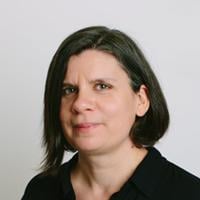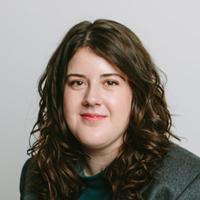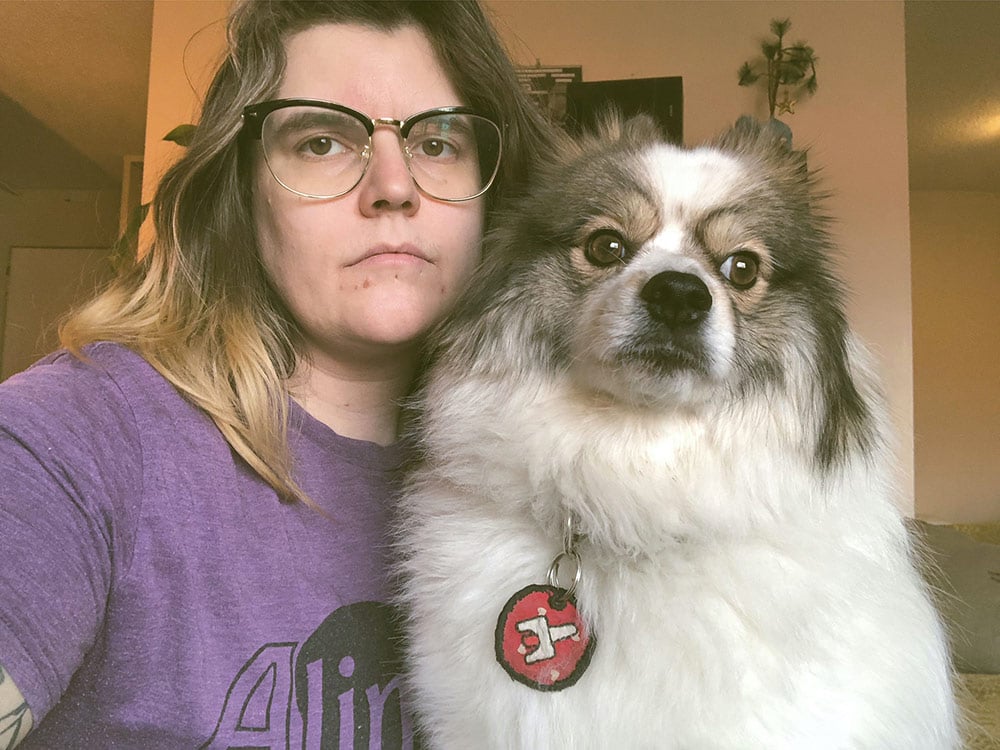British Columbia lost more people to toxic drugs in 2021 than any other year.
At least 2,224 people died last year. Almost 10,000 British Columbians have died in the last decade.
Every month or two, the government says it’s moving as quickly as it can to stem the “tragic” deaths through decriminalization, prescribed safe supply and funding for addiction treatment and recovery programs.
Frontline workers say that’s not what’s happening. These are the people staffing overdose prevention sites, doing outreach in encampments, reversing overdoses and connecting people with safe supplies of substances, treatment or recovery services, if they’re available.
The Tyee spoke to six frontline harm reduction workers about how the toxic drug crisis is playing out across British Columbia. Their contributions have been lightly edited for length and clarity.
Danielle Kennedy, HIV/HCV outreach educator, AVI Health & Community Services, Campbell River
I came back to work in September after my maternity leave. And then less than a couple of weeks ago, I found out my funding was cut. I’ve had a lot of challenges connecting with people, because I’m only one person, and I’m not allowed to go into encampments.
A lot of people are living rough, and with the end of our funding for an overdose prevention room in 2020, AVI has nowhere near the foot traffic we used to have, and we can’t help people. They’re not coming in. We’re not being given any tools to really bring people in.
People are dying left, right and centre. I had a friend die less than two weeks ago. That’s just one story. It’s the worst it’s been since it started. It’s like nobody cares about people who use drugs. I talk to my husband when we both read the news, and every month it’s the same goddamn fucking news article. And nothing’s changing.
There is more conversation that’s happening, and some cultural ideas are shifting about people who use drugs. But that doesn’t matter, because they’re still dying at a fucking alarming rate.
Peers and people who use drugs outside of the Lower Mainland are totally left out of the conversation. The majority of B.C. is significantly lacking in resources to the point where people might know that something exists, but do they have any idea how to access it? Or is it even offered in their community? Places like Duncan and Port Alberni have very limited options.
And there’s definitely been a big change of drugs. Benzos [or benzodiazepines, a class of depressants which are added to drugs unknowingly to drug users] are pretty brutal. It’s still an overdose, but it’s so much more challenging to deal with and requires a lot more attention. I’ve had to monitor someone for three hours, alone in the field. We only have two oxygen tanks and one oximeter right now. And there’s not as much you can do about it, other than just wait it out.
The services that are available are nowhere near what people need to succeed at all, not even close. The treatment centres that are here don’t work, and we see that over and over. We need things like second-stage housing, we need long-term housing. There’s maybe a couple more services, but they’re still not adequate.
We had one of the gentlemen who was one of our peer workers, he died of an overdose at a facility where he was living. Why are people dying of overdoses in a facility that’s supposed to do harm reduction and prevent people dying from overdoses by providing them stable housing?
We’ve got the SAFER [Safer Alternatives for Emergency Response] program in Victoria that does safe supply, and we’ve been trying to do that in Campbell River, but there’s so much red tape. And we’re already doing it successfully there, so why can’t we do it up here too?
We know what works. We know how to stop this from happening. And we’re trying to do these things. And the government and health authorities, it’s like they’re doing every single thing they can to make sure that those things can’t actually succeed.
Jon Braithwaite, board member and supervisor, Vancouver Area Network of Drug Users, Vancouver
Over the past year, the thing I noticed the most was when the benzos started to get mixed in with the fentanyl. At first the dealers were putting the fentanyl into the heroin, and we had to deal with that because the fentanyl is very strong, and so there was a wave of deaths because of that.
And then the addicts started to get used to that, and then the dealers started putting benzos into the dope. So now we’re dealing with this new wave of dope that has benzos. In a way, it’s more horrible because people are losing time. I’ve had it happen to me — you do your hit and it’s just lights out, and then you wake up and it could be hours or even days later. I’ve met three girls now that have been raped because of it.
It’s like a war out here. Every day you hear of somebody either OD’ing, or violence that happens because of the drug trade.
There are so many cases where most of these guys, when they start out, they’ll talk a good game to a dealer and the dealer will say, ‘OK, well, I’ll give you a zip of this’ — a zip is an ounce — ‘and I’ll give you a week to move it, and at the end of that week, I want my money.’ Well at the end of that week, if they don’t have that money, then there’s consequences. And that’s when the violence comes into play.
When I first came here, it was actually fairly docile. We were dealing with an overdose crisis at that time, but there were, relatively, zero benzos. So we didn’t have to worry about that. And we basically just had to be trained on naloxone, and once we got the naloxone down, we could basically save anybody who’s overdosing. I’ve saved well over 30 people since I’ve worked here.
We want to set up a safe supply to the point where we’d eventually be a distribution centre for a safe supply of drugs for people who use drugs. And that means they can come here, and they can be guaranteed to be given a supply of drugs that isn’t tainted with anything other than what they would be expecting.
Alexis Hekker, Indigenous wellness co-ordinator and lead drug-checker, ANKORS East Kootenay, Cranbrook
Most of the people we lost in our community in the last few years have been Indigenous. In 2019 we were seeing that harm reduction was actually working and fewer people were dying, and that we had so much hope.
And then deaths just piled and piled, it hit like a brick wall in 2020. Many of them were Indigenous women at risk and living rough. If you're Indigenous, you're over five times more likely to die of any kind of fatal drug poisoning.
What I needed when I was experiencing trauma and surviving Missing and Murdered Indigenous Women and Girls was that connection to my community. And as Métis person and citizen of the Métis Nation BC, that can sometimes be very hard. My family, we don't have any connection to our culture because of trauma. I was relearning my culture. So I wanted to pass that knowledge, because I know how much strength that gave me.
If I have a little bit of money to buy somebody a meal that is traditional, some fried bread and some bison stew, I will. I'm teaching other people how to bead because that was a huge turning point for me when I was able to learn how, and why that was so important to my culture.
People will start asking questions when they get comfortable. They'll start asking for referrals, they'll start telling you what they’re dealing with and asking, can you help me? I’m now renting an office at Operation Street Angel, which is run by the Ktunaxa Nation. I’m trying to decolonize harm reduction in a way, but I'm learning as I go.
When we see some change come to Vancouver, it feels like it will never come to us. We don’t even have an overdose prevention site in the East Kootenays. It's near impossible to get safe supply, you have to hammer at the right time, the right place, and be the right person.
We also do not have detox. We do not have access to anything that will help with folks like accessing recovery. One friend who just got accepted after so long trying, they've had to completely uproot themselves from their community and leave their families behind to be able to take this journey, which isn't realistic for some. I think of all those single mothers that do not have access to that.
We just got a FTIR spectrometer to test drugs a few years ago, so we did not have the capacity to have a full understanding of what our toxic drug supply level was until recently. Our Ketamine, our MDMA, everything has changed so much in the last five years, and it’s way more toxic.
I've been doing drug checking since I was 19, and volunteering with ANKORS before then, too. I’m 27 now. I'm terrified, to be honest, to see raves in our area come back because a lot of the folks that go to these events aren't using every day, and they have no idea how toxic it is now.
I’m supposed to service all of the East Kootenays, which is very difficult in the middle of winter. The roads are bad and if I take the FTIR drug checking instrument from Cranbrook and go to another community, now Cranbrook doesn't have it. So no matter what we do, another community is going to hurt and be at risk.
I find strength in seeing people live what they want to be living, when they're doing the little things to keep themselves safer. But we're exhausted, and we're fucking tired of death. Our goal is just to make people survive the night and we take it day by day, because it's hard to do anything else.
Juls Budau, master’s of social work candidate, freelance writer and researcher co-ordinator, Prince George
I live in Prince George. I’ve worked a lot of roles in the overdose crisis the past year: I’ve worked in harm reduction housing, I briefly managed an overdose prevention site here, I worked as a substance use support clinician, and now I’m writing my thesis for my master’s in social work, which is looking at user perspectives on stimulant safe supply and what it means to the users.
More people die of overdoses every month, but the provincial government keeps bragging about what they are doing without being honest about the limitations of the expansion of overdose prevention services.
I think this is so harmful, because the public perception is that we’ve done everything we can and it’s not working. The new BC Liberal leader campaigned on this false premise.
But service gaps haven’t been filled. There aren’t places for people to safely consume drugs in every community and there are very few places in the province for people to smoke their substances under supervision, which is how more than half of people who died last year used their substances.
Safer prescription alternatives — safe supply — are not available to everyone who needs or wants access throughout the province. Things like supervised injection and safe supply aren’t failures, they just aren’t available to everyone who needs them.
And there’s still a lot of misconception about what medical safe supply is. People genuinely think the government is giving out tons of free drugs and the reality is that a small percentage of drug users are given pharmaceutical medications that are free if they have pharmacare coverage.
The BC Coroners Service evaluates drug overdose deaths, and there is no evidence that medical safe supply is contributing to deaths. Meanwhile, six people are dying from using the street supply every day in this province.
Why don’t I push as much for more people to be on traditional opioid substitutes or go to treatment facilities? Many of my clients used both methadone and safer prescription alternatives, but the methadone prescription is cancelled if they miss a few days and they have to seek out a new prescription, which is not available every day in Prince George.
So a few days of instability causes more chaos and upheaval in their life. It’s hard to gradually work up to a therapeutic dose like that. Treatment centres vary on which medications they’ll accept, and the waitlists are long.
I just see all these conversations spinning in circles over and over again as drug users try to access help but face hurdles everywhere they go, and the death spiral continues. It’s exhausting.
Garry Sandhu, peer co-ordinator and addictions counsellor, Sober Life Foundation, Surrey
In 2020, we opened a phone line when COVID started initially. I wanted to be connected with the people who are in addiction. We couldn’t meet them face-to-face, but we thought we should at least have a phone line where we can be connected with each other and they can call us anytime whenever they want. During the last year, we received around 350 calls. [The One Life Peer Support Line can be reached at 778-381-5686.]
When I was in addiction, I was looking for help in 2012, and I couldn’t find any kind of resources in Punjabi or in Hindi. My English was fine, I could speak, but I was not able to understand — and it was very hard for me to connect with someone because I was not able to express my emotions and feelings. Which is very important if you want to be in recovery and come out of addiction.
So when I became sober, someone suggested to me that I go to school to become an addiction counsellor. When I finished my studies, I wanted to create a Punjabi program, so it’s available especially for the Punjabi community.
In our culture, mostly families get connected first, before a person calls for help for himself. And most of our families, they’re more comfortable speaking in Punjabi.
We knew that when the COVID-19 restrictions started, addiction numbers would go way higher because of the isolation, and there would be mental health issues. But we did not expect that street drugs would become so much more harmful, and that there would be so many overdoses.
Over the last year, there has been a huge shift in treatment as well. We used to discuss complete abstinence as well as harm reduction, but because of the dangerous drugs on the streets, we promoted harm reduction more. So that at least people are safe from the street drugs.
In complete abstinence, if someone relapses, there is a huge chance he could overdose. If a person is on a harm reduction program, if that person is taking methadone or suboxone, at least he will be way safer. He won’t be feeling that craving that a complete abstinence person can feel. Because if we save a life, only then there will be a future chance of complete abstinence or recovery, depending on the choice he wants to make.
Trey Helten, manager, Overdose Prevention Society, Vancouver
It seems like there’s just less and less people. Like the alleyways are less crowded, and our numbers are going down. And it’s not because people are moving on, it’s not because they’re getting healthier or planning safe supply options or going to treatment. It’s because they’re all dead. There’s no other way to put it. It’s just, funerals, funerals, funerals.
It’s become so many funerals that we’re having multiple memorials on the same day to try and streamline it. We had three memorials on one day in December or November. And now we have a thing, Memorial Mondays, where usually we’ll have a memorial at 3 p.m. to remember someone, and then a barbecue after with the Heart Tattoo Society so that people can eat and remember their friends.
The number one reason people are dying is because of tainted supply and using alone. Don’t use alone, get your drugs tested. Go to 880 E. Hastings, get your drugs tested. They’re open from noon to 9 p.m., seven days a week.
Go to a safe injection site, or safe inhalation site where nice people will help you. Unfortunately, there are a lot of drug users who feel like they would be stigmatized going to those places.
I think the solution, for people who have fear around being stigmatized about going to a place like the Overdose Prevention Society or Insite, is to educate yourself and download the Lifeguard app or the Brave app. Those are two apps you have on your phone and when you’re about to use, you type in the substance that you’re using and your location. And you click the start button once you’re using. And then if you don’t check in… they can send paramedics to your location. ![]()
Read more: Health, Rights + Justice, Labour + Industry

















Tyee Commenting Guidelines
Comments that violate guidelines risk being deleted, and violations may result in a temporary or permanent user ban. Maintain the spirit of good conversation to stay in the discussion.
*Please note The Tyee is not a forum for spreading misinformation about COVID-19, denying its existence or minimizing its risk to public health.
Do:
Do not: